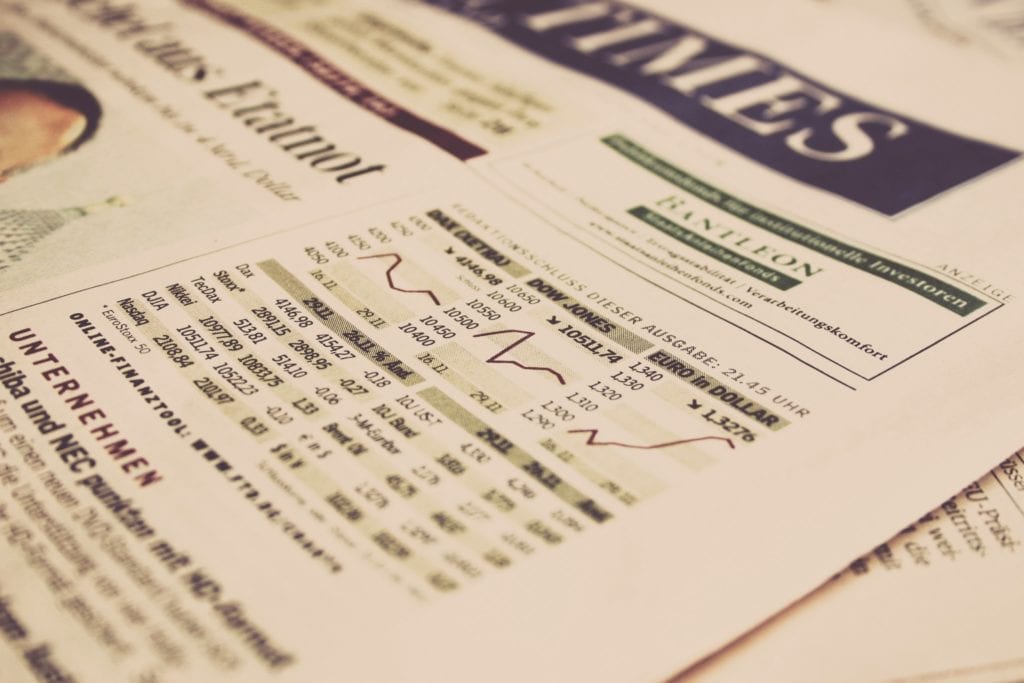By Sak Shariff, founder of PersonalFIREnance.com, advocate and advisor on how to achieve early retirement through investing.

I’ve met quite a few people now who have reached Financial Independence (FI), and I’ve read a number of blogs and articles giving advice on how to achieve it. My own personal approach to getting to FIRE and maintaining my income through my Early Retirement is very different from most other financially independent people, or FIREistas.
I believe that in order to get to Financial Independence and Retire Early (FIRE) you need to work on three key things:
- living within your means and saving money
- finding ways to increase your salaried income or generate additional passive income
- developing the mindset, temperament and knowledge to be able to invest your money at high rates of return
Today I want to talk about the last of those three, and the one that I think is the most important, learning how to invest your money successfully.
The Standard Approach to FIRE
In the FIRE community there seems to be pretty much a standard accepted formula for achieving FI. It involves living a miserable existence of extreme frugality for many years whilst trying to save up the equivalent of 25 times your income so that you can retire early. After you retire, you invest all your savings in tracker funds which give you the average market return of 7 to 10% per annum, and draw down 4% of your money each year to continue living an extremely frugal life until you die. This doesn’t sound like much fun to me.

Erm.. No thanks.
Nowadays most people, pretty much everywhere around the world, live and work in big cities. I think that saving 50 – 75% of your salary every year whilst living in a large city is extremely difficult, if not impossible, given the high costs of accommodation and transport in densely populated urban environments. It’s why many people dismiss FIRE as a delusional fantasy and a pipe dream, only achievable if you have a very high income to start with.
Other FIREistas advocate spending all your spare time working on a side hustle, such as running a blog or location independent business to boost your income so that you can stop working at your day job. But most of these side operations would quickly fail and stop generating income if they were not constantly monitored and maintained with a fair amount of time and effort, even after achieving FIRE. I don’t call that retirement.
My approach is different. I agree with the idea of improving yourself to max out your own earning potential and developing side hustles which provide good passive income. But I also think that learning how to invest your savings at high rates of return will allow you retire sooner than others, and with a smaller nest egg saved up. It will also give your greater financial independence than if you relied on customers, subscribers or tenants for your income. Your time would be better spent learning how to invest than finding ways to live more frugally by cutting coupons or saving a few cents on a bag of carrots.
Invest like the best
Imagine…there seems to be practically a foolproof way of getting good results out of common stock investment with a minimum of work. It seems too good to be true. But all I can tell you after 60 years of experience, it seems to stand up under any of the tests that I would make up”
Benjamin Graham
In order to get better than market returns in my retirement, I use a simple value investing strategy. It’s based on the work of the father of value investing, Benjamin Graham. He was a great investor in his own right, but his teachings also produced an unusually high number of really successful investors who followed his investing style, the most notable of which is Warren Buffett. Over the past several decades, Buffet has consistently been one of the top three richest people in the world. I’ve modified Graham’s technique a little to make it more effective in modern times, but in essence I buy companies that are cheap based on a number of metrics and sell them after a specific holding period.
My returns using this technique over the past 4 years have averaged 15% per year. And because I make more income from my savings than other financially independent people do, I need a smaller pot of money to fund my retirement.
I’m not going to go into the details of my investment strategy in this post. I just want you to see how important it is to make as much money as you can from the money that you already have. Over time, a higher rate of return can make a massive difference to your net worth.
Making (more) cents from cents

Let’s look at how investing your cash at a high rate of return actually compares to only getting the market average rate of return and what that means for your journey towards financial independence.
I’m going to use dollars here but if you want to, you can substitute pounds, euros or any other currency. The principal is still the same.
If you use the standard FIRE method of saving up 25x your income before you stop working, and living on 4% of it per year, then to have $40,000 income a year during your retirement, you will need to save up $1,000,000 before you can achieve FIRE.
4% of $1,000,000 = $40,000
Fair enough. But if you can get an much higher return of say 12% on your nest egg and you draw down 8% to live on, whilst reinvesting 4% to account for inflation, then you only need to save up half the amount, that’s $500,000, for the same $40,000 income during your retirement:
12% of $500,000 = $60,000
of which you will need:
8% to live on = $40,000
4% to reinvest = $20,000
Now it’s pretty clear that even if you didn’t earn any interest on your savings, it would only take you half the time to save up half the money, $500k instead of $1million, before you can get to FIRE. That’s already great news.
But the really cool thing is that earning high rates of return on your savings will get you to FIRE even quicker than you otherwise could. If you reinvest that money, you can build up your savings pot more rapidly and actually get to $500k in less that half the time it would take you to get to $1million!
Getting to Financial Independence Faster and Early Retirement Earlier

During the years while you’re still working, you obviously need to be living within your means and regularly and consistently putting money aside towards your retirement. If you can invest that money at above average rates of return, your savings themselves will be earning you even more money than they would otherwise. And the power of compounding will really accelerate your returns at those higher rates. This means that you won’t have to work for as long before you have enough money to retire.
Let’s look at how this works in reality. Let’s say you want to have $500k when you retire, so that you can live on $40k a year, and let’s assume you can save and invest in a tax free investment account, which you should be doing anyway.
This is how long it will take you to save up $500k at the different rates of return:
Save $15k a year at 0% = FIRE in 33 years
Save $15k a year at 1% = FIRE in 29 years
Save $15k a year at 7% = FIRE in 18 years
Save $15k a year at 12% = FIRE in 14 years
So if you can make 12% on your savings you could retire after only 14 years working! That’s 4 years earlier than you could at a rate of 7%, and 15 years earlier than if you just stuck your money in an ordinary savings account at 1% interest a year.
If you were aiming to save a million bucks for your retirement like most FIREstarters because you only know how to earn a market average return, then you would have to save $15k a year and invest that at 7% for 26 years before you could retire.
If you didn’t invest it or earn any interest, saving up a million bucks at fifteen grand a year would take you 67 years. That’s becoming financially independent and retiring late, otherwise known as erm… FIRL, Financial Independence Retire Late, which is exactly as good as it sounds.
The key thing to understand here is that by learning to invest at higher than market rates of return, you could retire 12 years earlier than most people who are aiming for FIRE, after just 14 years in the world of work.
Is it really possible?

Now some people are going to say that the average return on the S&P500 is actually 10% a year, not 7%, so this isn’t a fair comparison. But the simple value investing technique I use has been backtested by myself, by others and by Benjamin Graham himself to produce at least a 15% return when tested over a minimum 5-year period. Graham checked this over a 70 year timespan.
My own investment returns over the past 4 years since I retired have averaged 15% per year, including one down year and one year of major volatility due to Trump’s tariff war and the Brexit uncertainty. Now this has been achieved during a period when value investing has underperformed other investing styles. When value investing starts to outperform again, which it will, I should do just fine.
So I believe it’s quite possible to achieve 12% a year over the long term on a conservative basis, using this method of investing. And to make it a fair comparison I have taken a conservative view of the possible returns from the S&P500 as well. Even if you replaced the figures above with 10% and 15% returns instead, it would take you 13 and 16 years respectively to get to $500k. You’d still be retiring 3 years earlier using Graham’s method instead of investing in a bog standard market tracker.
And I’ve ignored any pay increases which would allow you to save more every year. These would disproportionately benefit Graham’s high return investing technique.
Nerves of steel

But investing like this comes with a huge caveat. Using your savings to generate a higher return over the long term than the market average is not easy to do. Understanding the technicalities of any investment strategy is, in my opinion, only a small part of what is required to be a successful investor. The rest is down to developing the correct mindset, self awareness and self-control to implement that technique correctly.
For a real world example of this in action, let’s look at the returns of one of the most famous investors of modern times. For a decade and a half, between 1977 and 1990, Peter Lynch ran the Magellan Fund and earned a staggering 29% average annual return. But over the same period the average investor in the fund actually lost money! Yes you read that right. The people investing in the Magellan Fund made a negative return despite the fact that the fund itself was outperforming the S&P500 by a huge margin.
How could this be? Well, the individual investors were moving their money in and out of the fund at all the wrong times, depending on how they felt about the markets. They were reacting with fear during bad times and greed during good times. In other words they were reacting emotionally to the market. There are many reasons why people do this but the end result is the same. They wind up moving their money in and out of the stock market at precisely the wrong times. If Lynch’s investors had just stuck with him through good times and bad they would have earned a 29% average annual return for over a decade. But doing this would have required nerves of steel. Successful investing is simple, but not easy.
The Magellan fund’s track record is still to this day the best mutual fund performance of all time. Incidentally, Peter Lynch was using value investing techniques too, although his methods took a lot more work than the strategy I use. If you want to know more about how he did it I suggest reading his books One Up on Wall Street and Beating the Street. Lynch also used a lot of the techniques suggested by Phil Fisher in his classic book Uncommon Stocks and Uncommon Profits, kicking the tyres on a vast number of companies to find the undervalued, unappreciated stocks which would go on to become tomorrow’s winners. Many people believe that Lynch burnt himself out over those 13 years due to the sheer intensity of work required to achieve the results that he did. I don’t think it’s possible for the average person like you or me to get returns like that, especially if you also have a day job.
No EMO
“If you cannot control your emotions, you cannot control your money”
Warren Buffett
Reacting emotionally to the gyrations of the stock market is what makes successful investing so hard for most people to do. You need to understand and accept that the market will go up and down a lot, but that over long periods of time it has always gone up. They say that past performance is not necessarily a guide to the future, but that applies to the short term rather than the long term. Over long periods of time the stock market has risen tremendously.
In any one year, stock prices can fluctuate wildly, sometimes by up to 50% or more. Sticking to your investment strategy through thick and thin will lead to long term success. This is the mindset you need to develop. But having the correct mindset is one thing. Having the temperament to pull it off is a quite another. Watching your wealth fluctuate massively like this over a short period of time is really difficult to do. Watching it fall and stay low for longer than a year or two is really, really hard.
I’ve spent years learning how to control my own emotions and training myself to become nonreactive towards the movements of the stock market. Developing this mindset was really difficult at first and I fell prey to many of the emotional ups and downs that the majority of investors suffer from. But over time, like most things, the more I worked at it the easier it became.
I also studied the natural human tendencies and biases which make us behave so irrationally, despite our misplaced belief that we are rational beings. This helped me understand that no matter how hard we try, some of our own biases are virtually impossible to overcome and the best course of action both in life and investing is to find a way to overrule them.
Having and implementing a rules-based system of investing is vitally important. As the individual investors in the Magellan Fund found out, ignoring your emotions and sticking to those rules through thick and thin, through good times and bad, is really tough.
To mitigate this further, many great investors also have a checklist based system which they go through methodically when selecting individual stocks to buy. These might include both quantitative and qualitative criteria. My own personal checklist is the strategy itself and I stick to it like superglue.
Buy low, sell high

The great thing about my strategy is that at times when the stock market has been rising strongly and is overvalued, it will stop me from buying stocks completely. It forces me to act against my own human tendency towards hubris, and my fear of missing out when other people seem to be making money easily. It naturally makes me buy low and sell high, the exact opposite of what most individual investors do when their minds are ruled by fear and greed, which is to buy high and sell low.
It’s important to remember that just following any old rules-based system does not necessarily guarantee success. Obviously it’s got to be a tried and tested method that you have complete confidence in. My approach is based on the work of Benjamin Graham, arguably one of the greatest investors of all time. His simple formula has been backtested on data over many decades, and I’ve tweaked it to make it work in our modern times of algorithmic and AI investing. I have faith in the strategy and I now have 4 years of personal experience to back up that faith.
Prior to my retirement I used other value investing techniques to get high returns on my savings and save more quickly. By doing this, I was able to retire early despite never having lived a particularly frugal life, or working particularly hard at my day job. But since discovering Graham’s simple investing methods, I believe I could have retired even sooner if I’d applied them many years ago.



